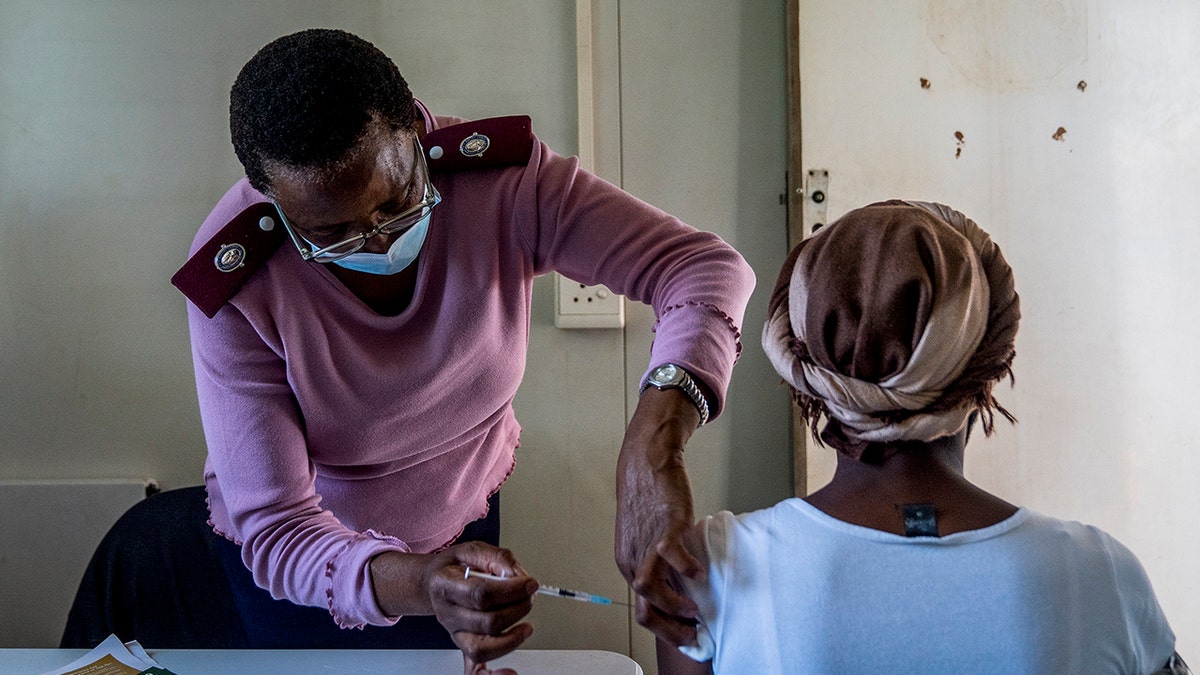We don’t want to accept omicron experience as new normal: Public health expert
Dr. Julie Morita has the latest on the state of the omicron variant and COVID on ‘Your World.’
The omicron wave that has whiplashed the world with surging cases has peaked after approximately four weeks in a large South African hospital in the City of Tshwane where the global outbreak first started, according to a recent paper.
The research, which is not yet peer-reviewed, compared 466 hospital COVID-19 admissions at the Steve Biko Academic Hospital since Nov. 14, 2021 (when the omicron outbreak began) to 3976 prior admissions at the same hospital before the outbreak began.
The paper noted the mortality rate among those hospitalized with the omicron variant was approximately 4.7 times lower compared to the earlier period, the discharge rate among hospitalized patients with omicron was twice as fast than patients without the omicron variant and at the peak of the surge, the hospital were half as full with infected COVID-19 patients compared to 18-month period before the omicron outbreak.

A woman is vaccinated against COVID-19 in Lawley, south of Johannesburg, South Africa, Dec. 1, 2021. (AP Photo/ Shiraaz Mohamed)
63% of hospitalized patients with omicron were admitted for other reasons, with the virus being detected only because of mandatory testing, while 72% of patients with omicron had mild to moderate disease, with only 45% of patients on the COVID-19 wards requiring oxygen supplementation compared to 99.5% in the first wave, the paper noted.
"The omicron outbreak has spread and declined in the City of Tshwane with unprecedented speed peaking within 4 weeks of its commencement," the researchers said.

People line up to get vaccinated at a shopping mall in Johannesburg, South Africa, Nov. 26, 2021. (AP Photo/Denis Farrell)
ARIZONA HOSPITAL'S ‘STAFFING CRISIS’ MEANS COVID-POSITIVE, SYMPTOMATIC EMPLOYEES PERMITTED TO WORK
The authors noted the limitations of the study include not being able to compare the omicron wave separately with each of the three prior waves (because of unclear start and end dates of previous waves) as well difficulty with comparing chest x-ray findings and blood biomarkers for COVID-19 disease in patients across all four waves due to poor electronic record keeping.
The research suggests that the omicron wave may also peak in a similar pattern in other South African provinces, but may differ globally in those countries where "levels of hybrid immunity and the mix of natural immunity from prior infection and vaccination are different."
CLICK HERE TO GET THE FOX NEWS APP
Centers for Disease Control and Prevention Director Dr. Rochelle Walensky noted to reporters on Friday that she’s cautiously optimistic of the "ice-pick" shape of South African omicron curve that skyrockets but declines rapidly.

CDC Director Rochelle Walensky gives her opening statement during the Senate Health, Education, Labor and Pensions hearing on next steps in the COVID-19 response on Capitol Hill, Nov. 4, 2021. (REUTERS/Elizabeth Frantz)
"I do think in places that we are seeing this really steep incline, that we may well see also a precipitous decline, but we're also a much bigger country than South Africa," Walensky said.
The authors concluded, "If this pattern continues and is repeated globally, we are likely to see a complete decoupling of case and death rates suggesting that omicron may be a harbinger of the end of the epidemic phase of the Covid pandemic ushering in its endemic phase."





















